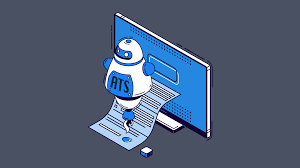
Navigating the Automated Gatekeeper: Your Guide to ATS Scanners
In the non-stop marathon that is the job application process, there’s a crucial moment of truth that often goes unseen. This is the second your resume lands in a digital inbox and awaits its fate at the hands of an ATS scanner. ATS, or Applicant Tracking System, has become the unsung hero—or formidable gatekeeper—of modern recruiting. But fear not, understanding this digital henchman is the key to unlocking job opportunities. Here’s how to make ATS your ally in the quest for employment.
Deciphering the Digital Doorman
ATS scanners are not mere gatekeepers; they’re sophisticated gatekeepers. They’re programmed with algorithms sensitive to the nuances of job descriptions and the expected credentials of applicants. Gone are the days when a cleverly formatted resume or a well-placed keyword could slide you past the scrutiny of a busy HR manager. Now, nearly 75% of job applications are terminated at this first stage, often without human eyes even glancing at them.
To make the cut, your resume needs to be primed for ATS. This involves a careful selection of keywords, an optimal layout, and an understanding of how these systems work. ATS isn’t designed to be sneaky or elusive—it follows clear patterns that can be tracked and leveraged.
Crafting a Resilient Resume
The first step in ATS-friendly resume crafting is keyword optimization. This means scrutinizing the job description and ensuring that your resume includes the most pertinent terms. However, a word of warning: stuffing your resume like a Thanksgiving turkey with keywords is a red flag for both machines and humans. Strive for a natural inclusion that aligns with your skills and experiences.
Next, format for clarity and simplicity. While color, graphics, and unusual fonts might make your resume stand out to human readers, they can trip up an ATS scanner. Stick to standard, readable fonts like Arial, Calibri, or Times New Roman. Use clear section headings and bullet points to present information.
Lastly, consider the document type. Most experts recommend submitting resumes in a Word (.doc or .docx) or PDF format. Avoid more exotic file types that may be incompatible with the ATS software.
Developing an ATS Strategy
Understanding how ATS works can inform your strategic approach. These systems parse resumes for certain sections, such as work experience and education. Customizing your application layout to highlight these areas can improve your chances of passing through unscathed.
Additionally, keeping your resume up to date is more important than ever. ATS has evolved to the point where it can detect how current your skills and experiences are. Regularly refresh your resume to reflect the latest developments in your career.
When in doubt, simplicity and specificity are your best allies. Craft a resume that straightforwardly reflects the job at hand. This can mean creating multiple iterations of your resume targeted at different job types, which may seem laborious but is an essential investment in your job search.
Continuing the Conversation
The digital transformation of recruitment has permanently altered the landscape for job seekers. Understanding and adapting to the role of ATS scanner can mean the difference between an unnoticed application and a step forward in your career.
For more in-depth strategies on navigating ATS scanners or to share your experiences with them, consider joining job hunt forums and communities. The insights and solidarity you can find there can make the process not only more navigable but also more bearable.
In the end, while ATS may be an automated gatekeeper, it’s you—armed with the right knowledge and approach—who holds the keys to the kingdom of employment. Be diligent, strategic, and focused, and each application you send could be another step closer to the career of your dreams.